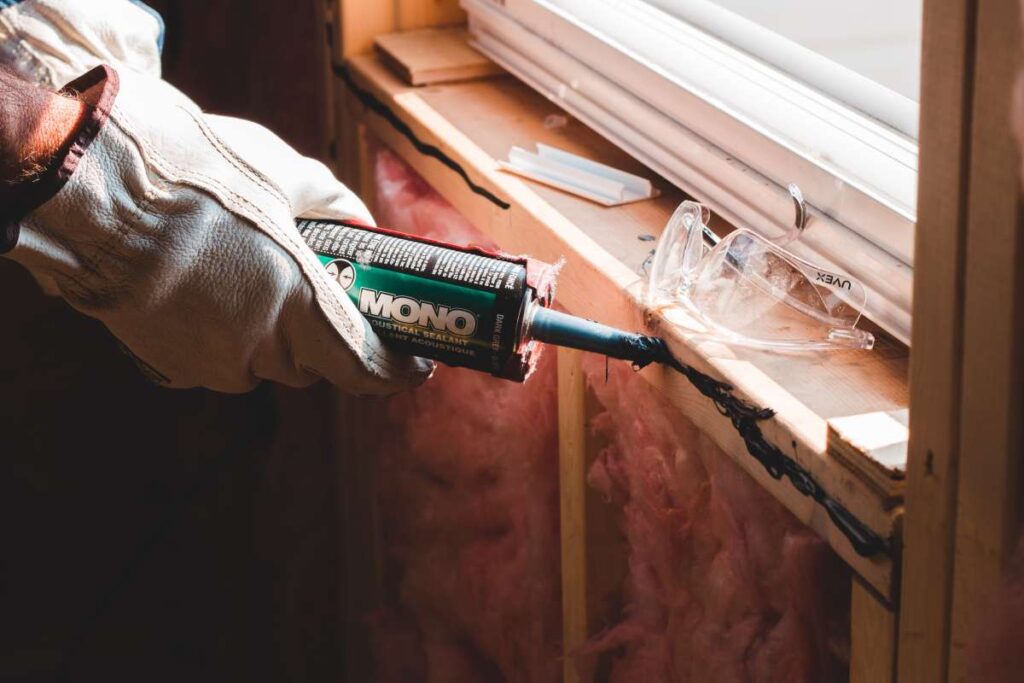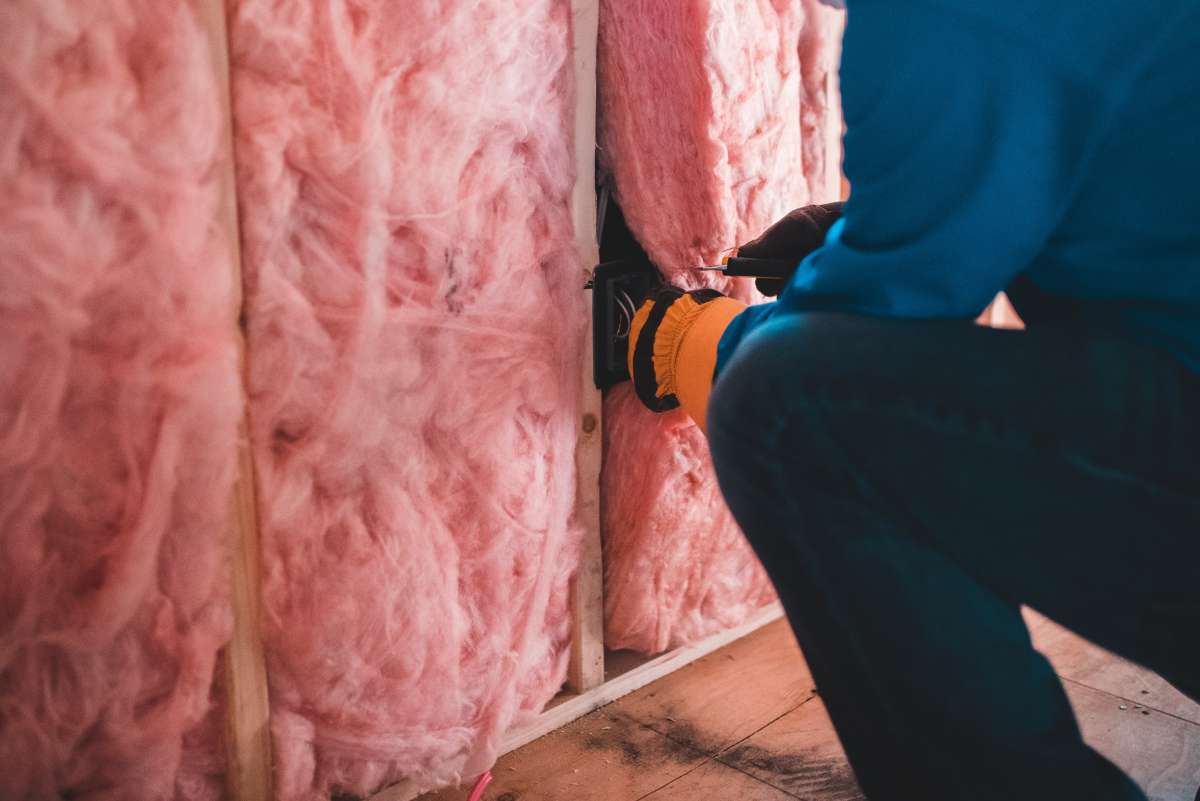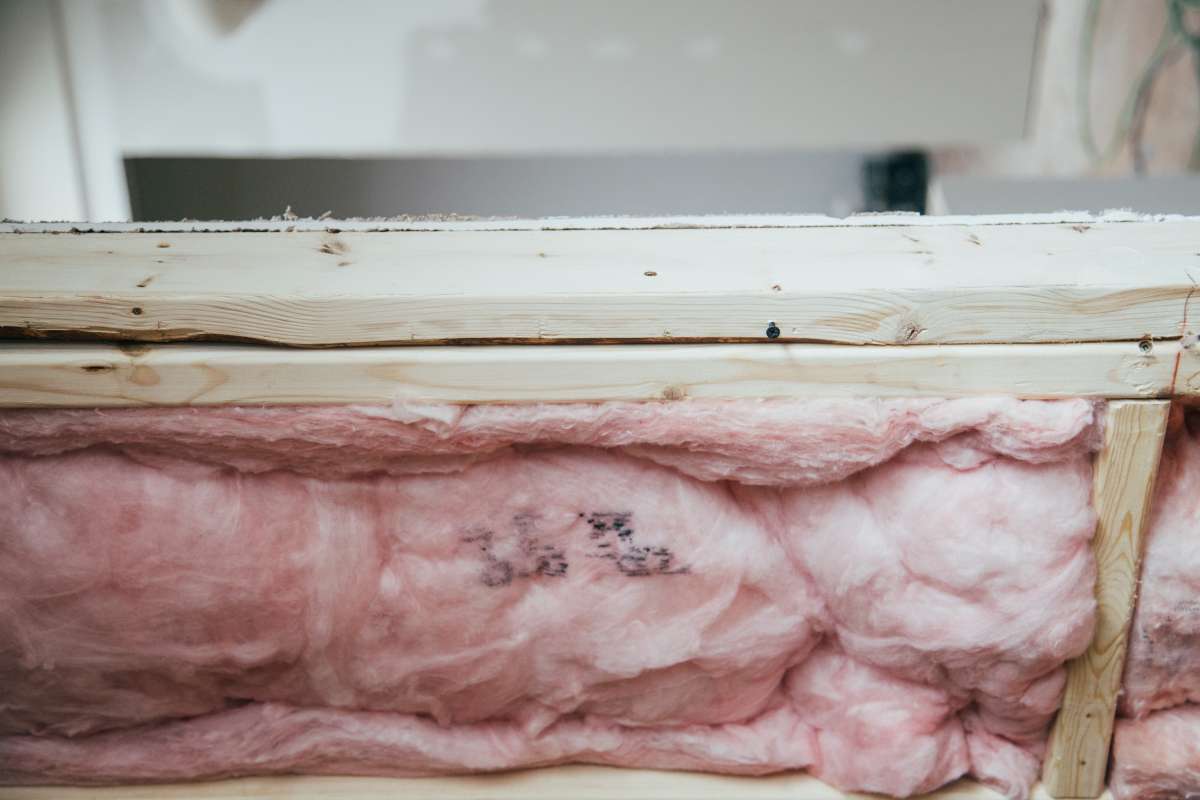Insulating a garage makes sense if you’re planning to heat the space.
When it comes to choosing materials, you can use the same types of insulation used on the rest of the house, but some are better than others, depending on whether the garage is finished or not.
You also want to insulate the garage door, which has different installation requirements than walls or ceilings.
The best insulation options for your garage will depend on whether the space has existing drywall or if the walls and ceiling are exposed.
The most common insulations used in garages include fibreglass, cellulose, spray foam, and injection foam.
If you’re looking to find the best insulation for your garage, you’ve come to the right place.
Insulating a garage is one of the best things you can do if you want to more easily control the temperature in your home and save on energy costs.
The best overall type of garage insulation is spray foam because it offers the best air sealing qualities, energy efficiency, durability, longevity, and R-value.
There are also numerous different options for insulation, and not all of these options are created equally.
To help you out, we will cover the top insulation methods and then give you our idea of what we think is the best one. Garage storage wall hooks should form part of any garage makeover as they provide a clean and really easy way to lift anything from your garage floor and have it accessible via your garage wall.
How To Choose Garage Insulation
Insulation helps stop heat from seeping out of your home and help save on unnecessary energy costs.
Keep in mind that the amount and type of material you need can vary widely, so there are a few things you should ask yourself before you start shopping.
- Do you plan on turning the area into a living space?
- Does it double as an office or workspace?
- Do you have a problem with moisture?
- Is this part of a larger project?
- What’s your budget?
What Types Of Garage Insulation Are There?
Many people don’t even think of insulating their garage when they insulate their home.
This is a mistake because insulating your garage will help out significantly with saving on energy costs for the entire home (provided it’s attached).
It becomes essential to insulate your garage if you have a room built over the garage.
Since the garage is attached to your structure, it will allow outside air to get inside your house via the shared wall.
Plus, any rooms you keep above the garage will no longer maintain a constant temperature as long as the garage is not insulated correctly.
There are a lot of reasons to insulate your garage.
- Your garage is attached and allowing the outside air to get inside your home through the shared wall.
- The bonus room above the garage can’t maintain a constant temperature and is uncomfortable.
- The smells from the garage are getting in your home.
- You want your garage to be a more comfortable space that can maintain a stable temperature.
- You want to utilise the area as a man cave or a she-shed.
- The builder didn’t finish the garage with drywall and insulation, so it’s always been on your to-do list.
Plain and simple, you should treat insulating your garage as an investment.
It can help lower your monthly energy bills, make it easier to regulate the temperature – not only of the garage but of the home as a whole – and make home living more comfortable.
There are also plenty of material options for insulating your garage, each with its own unique set of pros and cons:
Fiberglass Insulation
Fibreglass is arguably the most popular insulation material used in garages today. It consists of rolls that will be perfectly cut to fit into a ceiling or wall cavity and then stapled in.
It’s so popular because it’s inexpensive and can also be self-installed by most people.
However, it can only be installed into open cavities, and you need to be careful that you don’t embed any fibreglass into your skin or inhale it while you’re installing it.
Fibreglass can also only inhibit the flow of air movement: it cannot completely stop it. This is why it won’t be a good choice if you’re looking to block the flow of air into your home completely.
Fibreglass insulation can be installed in the garage as batts or rolls in the exposed wall cavities and exposed ceiling. There is also fibreglass made specifically for insulating the garage door.
Fibreglass is standard insulation found in homes and garages. The rolls and batts need to be cut to perfectly fit into the wall or ceiling cavity and stapled into place.
Fibreglass isn’t a good fit if you don’t intend to tear down your drywall, as it can only be installed in the open cavities.
A fibreglass is an inexpensive option that you can install on your own, but you have to take safety precautions if you are handling the material.
Tiny fibreglass fibres can embed in your skin and can even be inhaled.
If you want to stop all air movement into your garage, fibreglass isn’t the best fit as it still allows air to move through it.
Cellulose Insulation
Cellulose has been growing in popularity in recent years.
It’s made out of recycled newspaper material and then coated over with a fire retardant.
When applied as insulation, cellulose is usually blown into a wall with a particular blowing machine that will also aerate the cellulose (meaning the cellulose will fluff up to insulate the garage better).
Most often, these blowing machines can be acquired at home centres where they can be rented.
Cellulose insulation can be blown into the walls and ceiling cavity of the garage. This will only work if the walls and ceiling cavity are covered with drywall.
The cellulose is blown into the cavity through holes drilled into the drywall and then covered. It can be done from the outside by removing a row of siding or drilling into the mortar to blow the cellulose into the cavities.
If the walls are exposed, wet-applied cellulose is recommended, as blown-in won’t work in this application.
Wet-applied cellulose is mixed with a bonding agent and sprayed into the wall cavity. If mixed properly, the wet cellulose will stick to the hole without a netting requirement.
Cellulose is another cheap option for garage insulation.
It would be best to hire an insulation contractor for both applications as the installation process is more complicated.
Much like fibreglass, cellulose will still allow for air movement through the material.
Take note that you should only use cellulose for garage walls and ceilings that are already finished.
Assuming that your garage is finished but not yet insulated, you can install the cellulose by cutting holes into the wall and then spray the insulation into the cavities before patching the holes.
Rigid Foam Insulation
Rigid foam insulation is usually available in 4 foot by 8-foot sheets, with a thickness of up to 4 inches.
It’s usually made out of a Styrofoam-type material such as expanded polystyrene or polyisocyanurate.
Rigid foam is a good option because it offers a very high R-value, meaning that it can resist a significant amount of heat to keep the garage adequately insulated.
When it comes to applications, rigid foam is best used for insulating garage doors and thin walls. However, it’s not the best choice for insulating floors or thicker walls.
It would help if you also noted that most rigid foam insulation forms are not very fire retardant either.
Spray Foam Insulation
Spray foam insulation offers excellent R-value properties, much like rigid foam insulation does, but it also provides perfect air sealing qualities as well.
Spray foam is a higher-end insulation material that is more expensive but is also highly energy efficient.
Honestly, it’s not truly needed for most suburban garages, although it may be a good choice if you’re going to be converting your garage into a living space.
Spray foam and injection foam are similar; as they are foam-based products, they are applied differently.
Spray foam insulation would be applied to the open cavities of the walls and ceiling to create an air seal. Open-cell spray foam and closed cell spray foam are the two materials you can choose from.
Open-cell spray foam is more pliable and is better suited if you plan to add drywall after the foam is installed.
Closed-cell spray foam is better if you plan to keep the walls exposed because it is very durable and can take being knocked into. The closed-cell spray foam can also be used to insulate the garage door.
Injection foam is installed in the enclosed cavities by drilling holes in the drywall and injecting the foam.
A good contractor will apply a rough patch over the plugged holes in the drywall. This can also be done from the outside, similar to the blown-in cellulose.
Keep in mind that if the garage ceiling is finished and you want to use closed cell spray foam, then the drywall will need to be taken down.
If you choose an open cell in the same scenario, only strips will need to be cut to apply the foam. In either case, the drywall is replaced with a rough patch of mud to cover the seams.
Foam insulation is the more expensive option and can only be installed by an insulation contractor.
While foam is more expensive, it will save you money in the long run in energy savings each month.
Best Way To Insulate Garages
When it comes down to it, it’s up to you to decide what insulation material will work best for your garage.
Your expectations and what your overall goals are will help you determine the insulation that works best.
If you want a conditioned space that keeps the cold air out of your home or bonus room, a material that creates an air barrier is your best bet.
Fibreglass and cellulose don’t create the kind of air barrier you’re looking for in this scenario, so foam insulation is a better option. Garage Storage Solutions features an innovative wall system with heavy-duty sliding wall components such as hooks, garage shelving and stylish, durable steel cabinets designed to hold your gear securely and neatly in place.
Types Of Garage Insulation Materials
There are a couple of options for insulation, which typically costs between $930 and $2,100 to install.
The suitable material depends on your budget, whether you do it yourself or hire a pro, as well as your personal needs and preferences.
For example, if you’re looking for cost-effective material, Batt may be best for you. On the other hand, blown-in insulation is probably best if your garage has existing drywall but costs more.
These are just a few of the famous options homeowners choose for insulation. Other materials may work better for you.
Batt Insulation
This cotton-fibreglass material is relatively inexpensive and easy to use: place it in between the studs, staple a vapour barrier to cover it, and you’re in business.
However, for it to work effectively, you’ll need to wall it up as well. Therefore, you’ll need to buy and install 1/2″ drywall around the room (though ceiling and walls adjacent to living areas typically require 5/8″ drywall).
Depending on how handy you are and how good you want the final product to look, this may require a garage contractor’s work.
It adds to your cost, but a pro can get the job done right. For example, Batt insulation costs $145 to $200 for 535 square feet of insulation.
Blown-in Insulation
If you already have drywall installed around your garage but don’t have it insulated, then blown-in insulation may be the answer.
A contractor will come and open up a hole in the wall, pump in a cellulose insulating material, and then patch up the opening.
Blown-in Insulation is quick and can be done within a few hours without any additional demo or reinstallation.
However, insulation can come at a higher cost since contractors usually charge a minimum fee no matter space’s size or the time it takes. Blown-in insulation costs $1 to $1.50 per square foot.
Foam Board
If you don’t want to install drywall, you may cover the batt insulation with a rigid foam board.
But you’ll check with your local building codes, make sure it has a radiant barrier, and guarantee that it is flame-tested. Foam board costs $0.44 to $0.65 per board foot.
How To Insulate A Garage Wall In Four Easy Steps
Clear The Walls For The Insulation
If your garage has drywall, remove it. Consider renting a residential dumpster to toss it away.
Make sure to clear up any dirt and clear out the stud cavities.
Look for mould and clean up any chemicals in the garage, like gasoline or fertiliser. Then, find your nearest hazardous waste collection centre to dispose of these materials safely.
Look For Gaps And Cracks In The Wall
Get your expanding foam and vigorously shake it for about one minute. Then, attach the straw to the can and hold it upside down to spray it in the openings.
Only fill gaps about 50 per cent full. The foam will continue to expand and fill the space.
Give it about five to 15 minutes to continue expanding and become tack-free. It should be completely cured – or hardened – in 8 hours.
Install Fiberglass Insulation
Staple the paper face of the insulation to the side of the stud, NOT the front of the stud. You’ll need to leave the stud’s face exposed to install the drywall on top of the insulation.
Put a piece of wood on top of the insulation to use as a guide to cut the insulation to the correct size. Then, use a utility knife to cut excess insulation so it fits the size of the stud.
Tuck the insulation in to make it easier to staple. Staple the insulation down the side of the stud.
Cover The Insulation With Drywall
Screw and glue drywall to the stud. Do not leave the paper of the insulation exposed. This is a fire hazard.
How To Insulate A Garage Ceiling
Insulating the ceiling of your garage involves the same process as insulating the walls. Just remember to use thicker R-40 insulation.
Safety Tip: Measure the height and width between the framing in the ceiling and pre-cut the pieces you’ll need. This will help while you’re up on the ladder.
Insulating the ceiling is the essential part of the garage because heat rises and escapes through the roof.
Like wearing a hat in the winter, you need to make sure the top of the garage is protected from trapping the heat in.
How To Insulate A Garage Door
Insulating a garage door can be more involved than insulating the walls and ceiling. The easiest option is to buy an already-insulated entry.
If you’d prefer to cut costs and stick to the DIY option for insulating a garage door, we recommend buying a garage door insulation kit.
The process should be pretty similar to insulating the walls and ceiling.
Keep in Mind: When you insulate the door, you’re adding weight to it.
You may need to change the springs to retain tension and balance so that it stays closed properly.
This is why it may be easier to get an already-insulated door or have a professional help you.
Which Insulation Is Best For A Garage Overall?
The best overall type of garage insulation is spray foam because it offers the best air sealing qualities, energy efficiency, durability, longevity, and R-value.
At the same time, it’s also the most expensive and isn’t truly necessary for most garages in suburban homes either.
Fibreglass, as noted previously, is the most popular type of insulation method for a reason. It’s very affordable and will work for most applications.
It will make it easier for you to control the temperature flow in your garage, and it will also severely inhibit the flow of air.
Regardless of what kind of insulation material you choose, you always need to inspect the garage once it’s been insulated quickly.
The garage must be completely sealed off to get the most from your insulation.
Ensure that there is caulk sealing up any cracks in the garage (check the floor and ceiling, where shots are the most likely to develop).
Have the door leading into your house weather-stripped, and consider a metal door for extra safety.
Also, check for leaks around the windows, electrical outlets, and garage door for any air leaks that lower energy efficiency. Garage Storage Solutions features an innovative wall storage system with heavy-duty sliding wall components such as hooks, garage shelving and stylish, durable steel cabinets designed to hold your gear securely and neatly in place.


